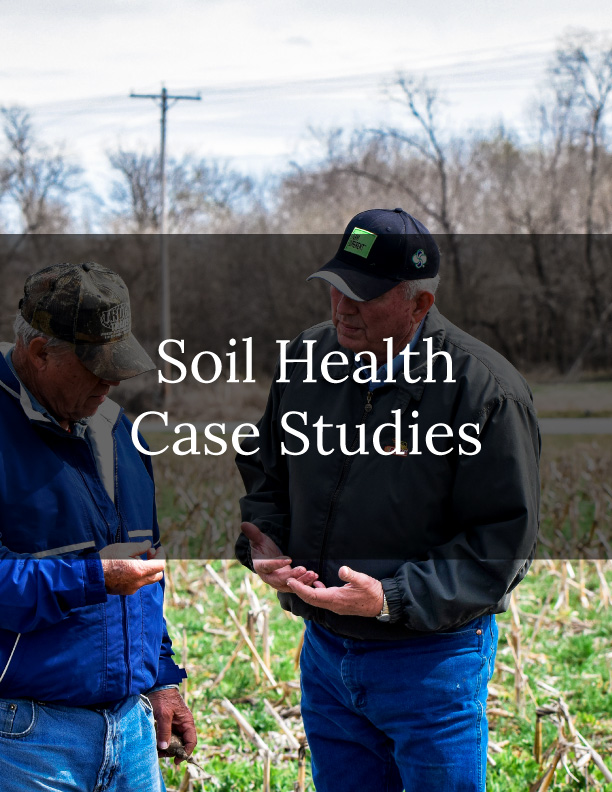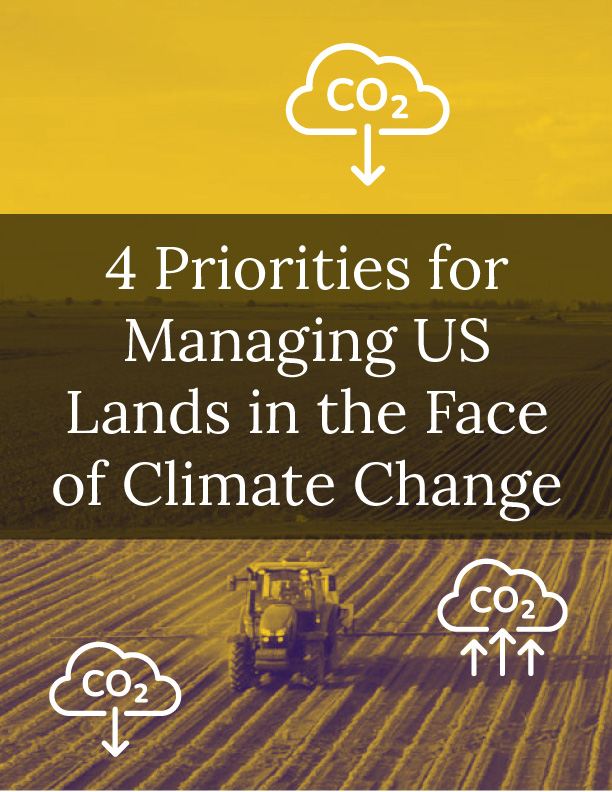
According to research by the American Farmland Trust (AFT), from 2001-2016, 11 million acres of American farmland were converted to uses that threaten the future of agriculture. Looking ahead, AFT modelling indicates that the U.S. will lose an additional 18.4 million acres by 2040 in the absence of significant policy interventions. Continued conversion of our working lands threatens the future of agriculture, rural economies, and national food security, while pushing land prices beyond the reach of established and aspiring farmers and ranchers alike. Land use change from cropland to other uses is also a driver of greenhouse gas (GHG) emissions as it displaces efficient agricultural production, which often leads to agricultural development in other areas including forests and grasslands that act as carbon sinks. Therefore, agricultural land protection is an essential tool for addressing climate change.
“Agricultural conservation easements are an essential – and too often overlooked – tool in our efforts to address climate change,” said Cris Coffin, Director of AFT’s National Agricultural Land Network and Senior Policy Advisor. “These easements help reduce greenhouse gas emissions generated from low-density development. And protecting America’s disappearing farm and ranch lands is foundational to securing broader climate gains from American agriculture.”
A white paper recently released by AFT, entitled “Agricultural Land Protection: An Essential Tool for Fighting Climate Change,” presents five ways in which agricultural conservation easements help mitigate climate change, positing that they:
- Avoid the conversion of agricultural land to developed uses with higher GHG emissions.
- Encourage greater adoption of practices that sequester carbon, reduce GHG emissions, and build climate resilience.
- Retain the benefits of conservation practices and the potential of lands to serve as a carbon sink.
- Reduce the threat of converting grasslands and more marginal land into production.
- Protect other lands associated with farms and ranches – like woods and wetlands – that often provide valuable carbon sequestration.
Federal Farmland Programs Foster Adoption of Climate-Smart Agricultural Practices
The paper builds off of survey results – published by AFT last September – of owners whose land was protected by the federal Farm and Ranch Land Protection Program (FRPP). This program is the precursor to the USDA Natural Resource Conservation Service’s (NRCS) current Agricultural Conservation Easement Program (ACEP). The survey showed a direct relationship between program participation and implementing “climate-smart” practices, the subset of conservation practices identified by USDA NRCS as delivering carbon sequestration and GHG reductions.
“We found that participation in the federal farmland protection program resulted in a so-called ‘permanence syndrome,’” said AFT Director of Farmland Information Center and Senior Advisor Jen Dempsey, who led the research effort which was conducted in partnership with the Resources Social Science Lab at Purdue University. “Proceeds from the voluntary sale of conservation easements gave landowners money to help adopt new practices. But more than that, owners said the protected status of the land motivated them to make long-term investments and improvements to their land.”

Photos by ©Alita Film (left), ©Carlton Ward Jr. for TNC (center), and ©Evam Dority/TNC Photo Contest 2023 (right).
The FRPP survey shows higher adoption rates of climate-smart practices by owners of eased land than the general farming population. For instance, 65 percent of respondents used conservation tillage and 57 percent implemented cover crops or green manure crops. The National Agricultural Statistic Service’s 2017 Census of Agriculture of the general farming population shows 34 percent of farms using no-till or reduced tillage and 10 percent implementing cover crops.
The white paper also points to how permanently protecting agricultural land can avoid GHG emissions when coupled with Smart Growth. This approach has been taken by the State of California through its Sustainable Agricultural Land Conservation program, which funds agricultural conservation easements based on quantifying their potential GHG benefits. AFT is presently exploring how such an approach could be used nationally.
“To date, over 8 million farmland acres have been protected,” said Coffin. “While this is an incredible achievement, it represents less than 1 percent of our nation’s farmland. If we are to meet our climate goals and feed a growing world, we must redouble our support for agricultural conservation easement programs at all levels of government.”
The Federal Government Plays an Important Role in Farmland Conservation
The federal government plays a large role in where and how development occurs, and its influence should be harnessed to steer development away from our most productive, versatile and resilient agricultural land. The federal government is also a valuable partner in protecting working lands by funding several programs through the Farm Bill.
USDA’s Agricultural Conservation Easement Program-Agricultural Land Easements subprogram (ACEP-ALE) compensates willing landowners who permanently protect their land from development; USDA’s Regional Conservation Partnership Program (RCPP) can also be used to permanently protect working lands. ACEP-ALE and RCPP offer landowners a valuable way to extract equity from their land to implement new conservation practices, pay down debt, finance farm expansion, or enable retirement and a farm or ranch transfer to a next generation. Permanently protected land is often significantly more affordable for the increasing number of next generation farmers and ranchers who did not grow up on a family farm. Both programs experience high demand and oversubscription, yet they prove excessively burdensome for both landowners and state and local partners, highlighting the necessity for administrative streamlining.
Congress is currently working on the next Farm Bill, which will include opportunities to improve and strengthen ACEP, the sole federal program devoted to the purchase of agricultural conservation easements.
In conclusion, it is evident that agricultural land protection is crucial in our collective efforts to address climate change and ensure food security for future generations. As highlighted throughout this article, agricultural conservation easements serve as a powerful tool in this endeavor, offering landowners incentives to protect their land from development while providing opportunities for financial stability and succession planning. By harnessing the influence of the federal government and implementing necessary reforms, we can pave the way for a future where our agricultural lands remain productive, resilient, and accessible to the generations of farmers and ranchers to come.
This article was adapted from the original version published by American Farmland Trust. Access original article here.
Learn more:

Explore our Decision-Makers Guide to Natural Climate Solutions to better understand the science behind these strategies and get tools to implement them.

See AFT’s Soil Health Case Studies page to read how farmers across the US are embracing soil health practices for increased resilience, efficiency, and environmental benefits while improving their bottom line.

